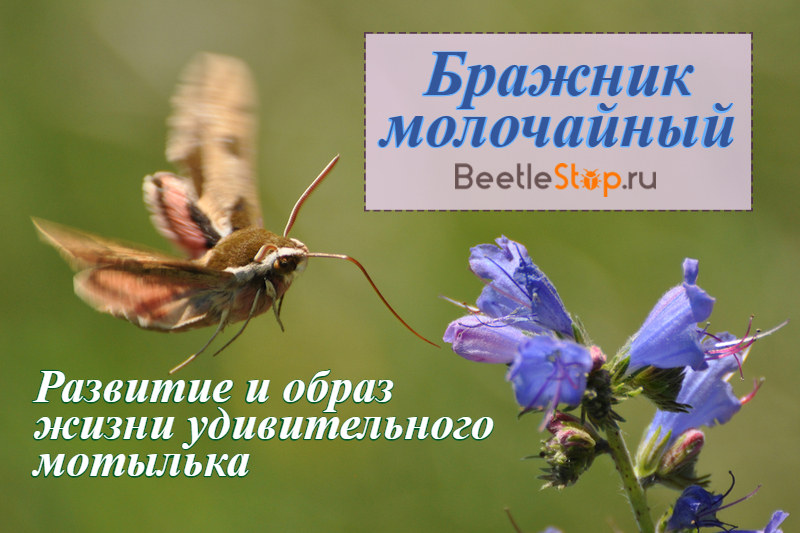Euphorbia hawthorn - a little helper in the fight against weeds
+ Butterflies of the family of hawks surprise with their appearance and lifestyle. Large individuals, the chest and abdomen of which are covered with hairs, are similar to small birds. When feeding, many species hover over the flower, like a hummingbird. Striking fitness moths for long flights. Every year they migrate from the tropics and subtropics to temperate latitudes. During the trip, they fly over mountains and seas. Euphorbia hawthorn - one of 1200 species of this extraordinary family. The insect caterpillar feeds on milkweed, the insect is introduced in the USA and Canada to control weeds on agricultural fields.

Botanical description of the species
Euphorbiaceae (Hyleseuphorbiae) - an insect of the order Lepidoptera, the family of Hornwort. Large butterfly with a wingspan of 65-80 mm. The upper body is olive green or brown. Fore wings gray or olive with light and brown stripes, spots and bandages. At the base of the wings of the euphorbiacea hawthorn pass two white stripes, which, as seen in the photo, converge on the head. The hind wings are pink with a black spot at the base and a black border near the outer edge. The lower body and wings are pink.
The abdomen consists of 10 segments; spiracles are located on the sides of up to 7 segments. The ring-shaped parts are separated by light stripes, black spots on the front segments. Spurs are located on the front legs, which the butterfly uses to care for the antennae. The abdomen has the shape of a cylinder with a pointed end. It consists of ring-shaped segments with spiracles. The eyes are convex, round, facet type. Butterflies are able to distinguish colors and objects with minimal lighting.
Interesting fact. Brazhniki are the best flyers among butterflies, during their migration they fly thousands of kilometers. The moth's speed reaches 50 km / h.
The sucking mouth is represented by a long proboscis. Most of the time the proboscis is twisted into a spiral, flying up to the flower, the moth spreads it and lowers it between the petals. Butterflies are active at night. They spend the day sitting on trees or bushes, covered with wings. Moths are attracted to electric light; they flock in large numbers to artificial light sources.
Larva description
The caterpillar of the euphorbiaceum hawthorn can have a different main color - green, yellow, red-brown, black. In individuals of green color, the pattern consists of black and yellow spots, as well as white dots. On the sides of the larva, 11 white spots are visible, which occur on each segment of the body. The caterpillar has underdeveloped abdominal legs of a coral color, a red head and a longitudinal strip along the back. The horn is red at the base and black at the end. Bright coloring serves as a warning to birds. Larvae that eat poisonous euphorbia themselves become poisonous.
Power Features
Brazhnik got its name because of the feed plant of the larva - milkweed. There are about 200 species of this plant, most of which are related to malicious weeds. Euphorbia is resistant to drought, multiplies rapidly and grows actively.It is quite difficult to get rid of the weed, so the milkweed hawthorn eating leaves and flowers is considered a useful phytophage. In addition to various species of the main fodder plant, caterpillars can feed on sporish or mountaineer birds, grapes, fuchsias.
Interesting fact. The family of butterflies was called “brazhniki” because of a peculiar way of feeding. A large fragile insect can not withstand a fragile flower, while sucking out nectar, butterflies hang over it. Dropping a long proboscis between the petals, they produce nectar. Flying from flower to flower, moths begin to sway like drunk. Earlier, people who were hungry were called “brazhniki”; for their special behavior, butterflies received the same nickname.
Distribution area
The butterfly lives in Southern and Central Europe, the Middle East and Asia Minor. In Russia, it is common in all South European regions, noted in the Urals, the Caucasus, and southern Siberia. Migratory moths are seen in Karelia, Tomsk and Tyumen region. The wide distribution of the species is explained by a lower sensitivity to cold. Butterflies settle where euphorbia grows - on slopes, forest edges, along field roads.
Attention. Euphorbiaceae is included in the Red Book of the Tyumen region as a rare species. As protective measures, it is recommended to preserve areas where fodder plants grow: spurge, tarragon, wormwood-tarragon.
Breeding
Lepidoptera insects are completely transformed. Their life cycle includes several successive stages:
- egg;
- larva;
- pupa;
- imago.
Years of butterflies are observed in May-June, the second time - in September. Females and males mate at dusk. Fertilized females masonry on milkweed. The eggs are light green, round. They are covered with a sticky substance that helps to stay on the leaves and stems of the plant. The embryo develops in about two weeks. The hardened caterpillars are small, of a uniform color - green or yellow.
Development from larva to imago
Young larvae eat a lot, they need to accumulate a large amount of nutrients before pupation. Caterpillars go through stage 5 of growing up. After each, they increase in size and change color. The larvae eat the discarded skin, this is a complete source of protein. The second generation, which appeared in August, in favorable years is distinguished by a huge number of larvae. On fodder plants, crowding of caterpillars occurs.
Before pupation, the caterpillar slides to the ground, it hides under a layer of grass or buries 5-7 cm into the soil. A spider web cocoon is built there. Pupa is light brown. At this stage, insects arrive from three weeks to a year.
Not only second-generation pupae, but also partially of the first, go for wintering. Young hawks are born at night. Butterflies crawl onto branches, where they spread their wings for 15-30 minutes.

